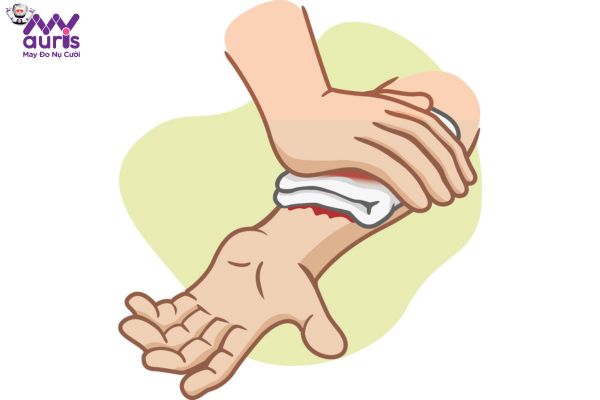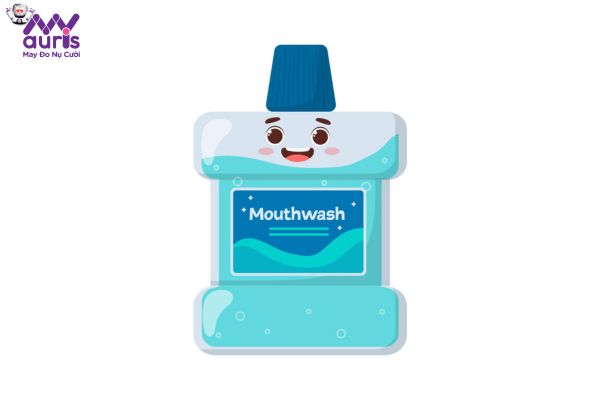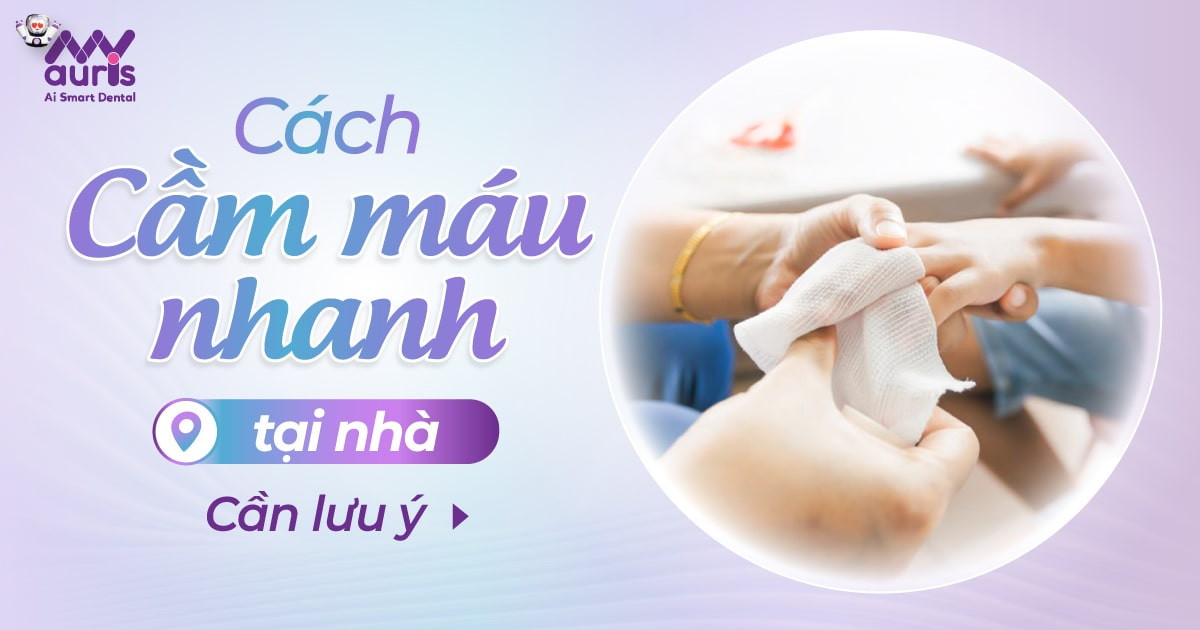During daily activities, it is unavoidable that you encounter accidents that lead to bleeding wounds. Below are some quick ways to stop bleeding instructed by doctors to apply at home. However, these tips should only be applied to small wounds and scratches on the skin. Therefore, My Auris recommends that the family be equipped with a medical cabinet, with enough equipment to properly stop bleeding.
Top ways to stop bleeding quickly at home that you need know
Depending on the severity of each wound you encounter, choose how to stop the bleeding quickly on the spot or go to the hospital. With minor bleeding wounds, people tend to give first aid themselves. It is important that bleeding is done safely and as quickly as possible. The person performing hemostasis needs to comply with cleanliness and wear rubber gloves before the procedure.
Hold the wound tightly

First aid is considered one of the fastest and highly effective ways to stop bleeding. The operator needs to hold the wound tightly for a few minutes. This first aid method is suitable for small cuts such as scrapes, cuts, etc.
Use a clean, dry piece of gauze or medical bandage to place on the wound site. Use your fingers to press firmly and hold tightly until the bleeding stops, then secure the bandage. You need to make sure the wound has completely stopped bleeding before letting go. Removing the gauze pad too soon can also cause the wound to bleed again, affecting the results of first aid.
Elevate the injured position
Elevating the area of the body that is bleeding will reduce blood flow in the wound. This is one of the quick ways to stop bleeding that you should try. In case the injury occurs at the arm, you need to raise it above your head. If the injury is to the lower extremities, lie down and lift the injured area above the level of your heart.
Use ice to help stop bleeding
Using ice to apply to the wound will help shrink blood vessels. So. It will promote blood clot formation more quickly than normal. You can use iceIt is considered a quick way to stop bleeding that many people trust and apply.
However, one point to note when using this first aid method, instead of using cold ice directly on the surface of the wound. You need to wrap the ice cube in a soft, clean cloth before applying it to the wound.
Use tea or pennywort to stop bleeding

In the medical stage Not yet developed, our grandparents used herbal plants as tips to treat diseases, stopping bleeding was no exception. Green tea, pennywort,… are all names with effective antiseptic and hemostatic properties.
Depending on whether the wound is large or small, you use a sufficient amount, wash, crumple and apply directly to the wound and use a gauze pad to help fix it. Using green tea and pennywort not only helps stop bleeding quickly but also helps wounds heal quickly.
Use lubricating oil to stop bleeding
Lubricating oil is also a useful tip to help stop bleeding on shallow wounds. Many cosmetics, including lip balm and Vaseline home moisturizers, contain this ingredient. This is usually a mixture of oils and waxes that can be used to protect the skin and keep it soft and smooth.
Lubricants used to stop bleeding due to shallow cuts are quite effective. Once the bleeding has stopped, you need to dry your skin and remove any excess oil. To avoid dirt that can stick to the oil layer and cause inflammation.
Use mouthwash to stop bleeding
The alcohol contained in mouthwash acts as a blood vessel constrictor, and when applied to the wound, it will help the blood clot quickly. Besides, aminocaproic acid in mouthwash also helps treat bleeding in the mouth when performing dental treatments.

However, if there is bleedingmouth bleeding, you should try not to gargle. Because this can dislodge the blood clot from the bleeding site in the tooth, and at the same time cause the mouth to continue bleeding.
Use antiperspirant to stop bleeding
The main task of this drug is to cause sweat glands to shrink, reducing the frequency of sweating. Similarly, the aluminum chloride ingredient in antiperspirants also has the ability to constrict blood vessels. From there, the wound quickly stopped bleeding.
Note: The above methods of stopping bleeding are best applied only to cases where the wound is mild and has little bleeding. No matter which method you choose, the principle that must not be overlooked is disinfection before first aid, and after stopping bleeding.
Even if stopping bleeding has achieved its goal, you still have to make sure to keep the wound clean. Because if the wound is not treated, it will be difficult to prevent the risk of infection.
What kind of bleeding condition requires seeing a doctor?
Most bleeding from small wounds or minor injuries will stop on its own after you apply the right quick bleeding remedies. However, there are some types of bleeding that are potentially life-threatening. When encountering the following incidents, the victim needs to go to the hospital for immediate first aid:

- Blood does not stop flowing from the wound, no matter how many different methods you use to stop the bleeding.
- Bleeding from trauma that soaks clothing or soaks bandages.
- Injury that causes total or partial loss of a certain part of the body.
- The bleeding person faints or becomes confused and loses consciousness afterward.
Even if the bleeding has stopped, you should see a doctor if you have a leg problem if:
- The wound needs stitches.
- Dirt and debris, foreign objects in the wound cannot be completely removed.
- There are signs of infection.
- Not vaccinated against tetanus within 5 years.
The vast majority of cases have bleeding in the capillaries, if you know how to stop it. However, you should not be subjective because if you lose too much blood, this is the leading cause of death. Therefore, if the wound is too large and too deep, you need to temporarily stop the bleeding and pay attention to disinfection soon. right;”>Yen Nhi





